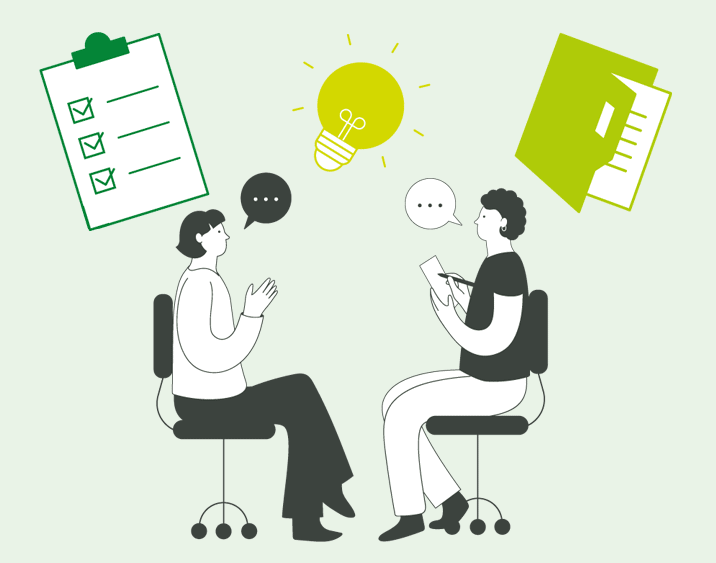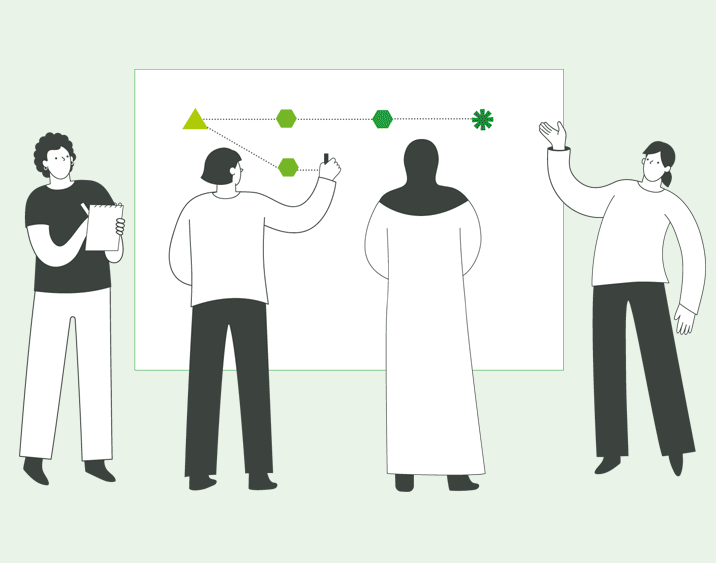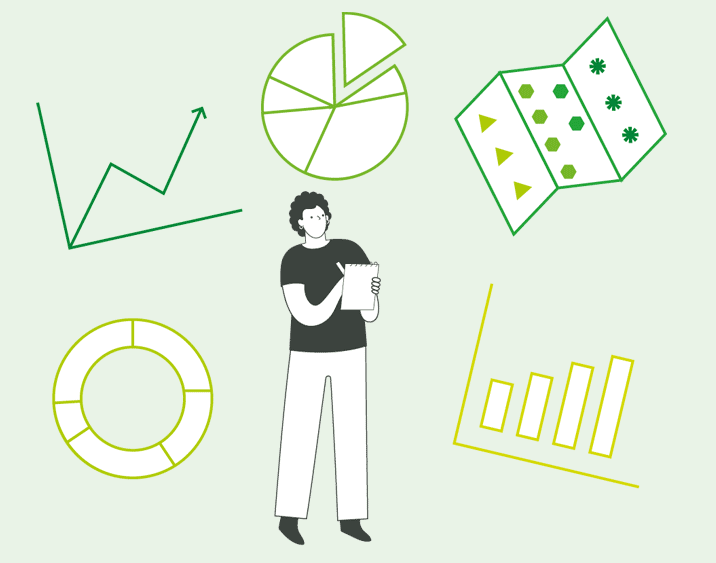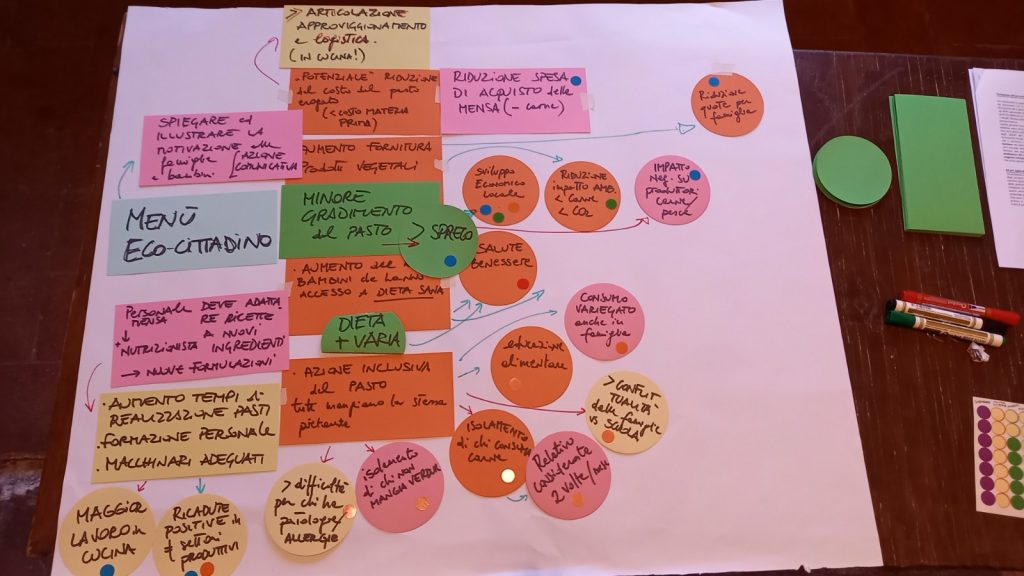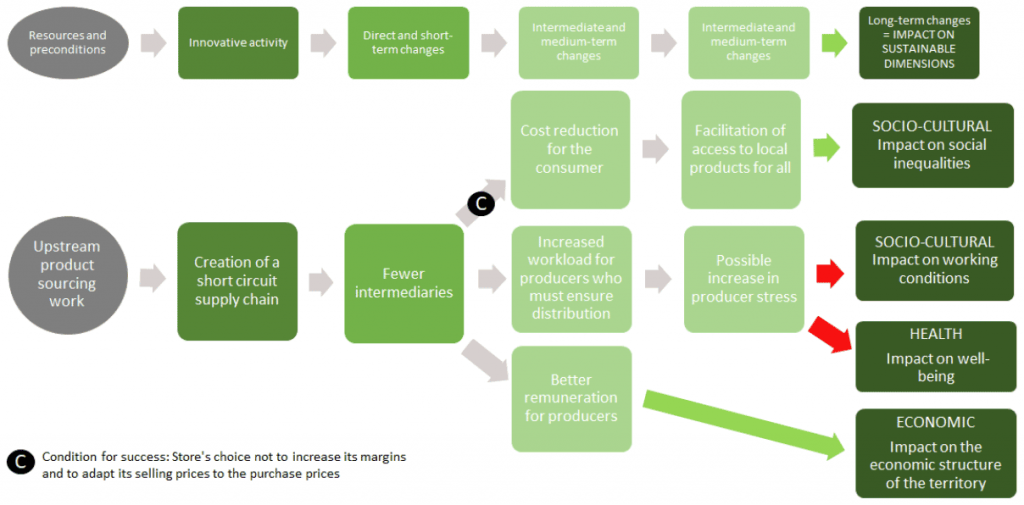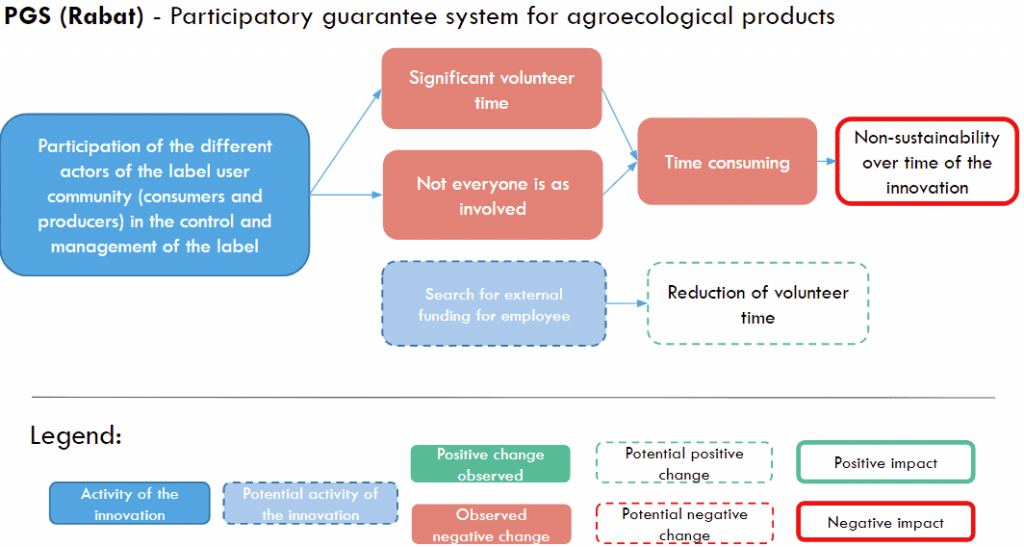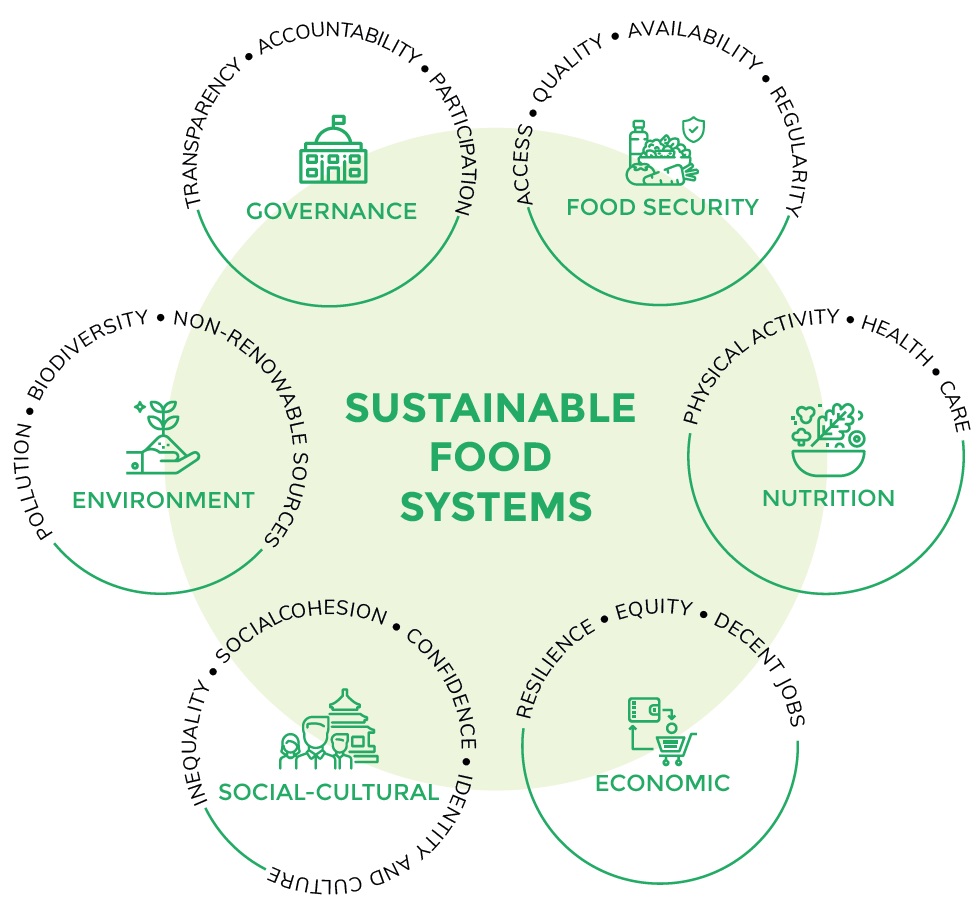L’objectif est de recueillir les connaissances et l’expertise des participant.e.s sur les impacts des innovations sur la durabilité. Ils et elles sont invité.e.s à répondre à une question simple : Qu’est-ce que chaque activité a changé à court, moyen et long terme sur le chemin vers la durabilité ?
Pour identifier un nombre suffisamment important de changements et de points de vue, nous vous suggérons d’utiliser des sous-groupes de discussion – un moyen fonctionnel et inclusif d’atteindre vos objectifs, et simple à utiliser.
- Fonctionnel : Des petits groupes vous aideront à cartographier davantage de changements et de chemins d’impact de l’innovation et peuvent vous permettre de travailler simultanément sur plusieurs activités.
- Inclusif : Les petits groupes offrent des espaces plus sûrs pour la contribution des participant×e×s, car les gens s’engagent généralement davantage dans des discussions et des réflexions en groupes restreints.
Chaque groupe traitera successivement plusieurs activités et cartographiera leurs chemins d’impact.
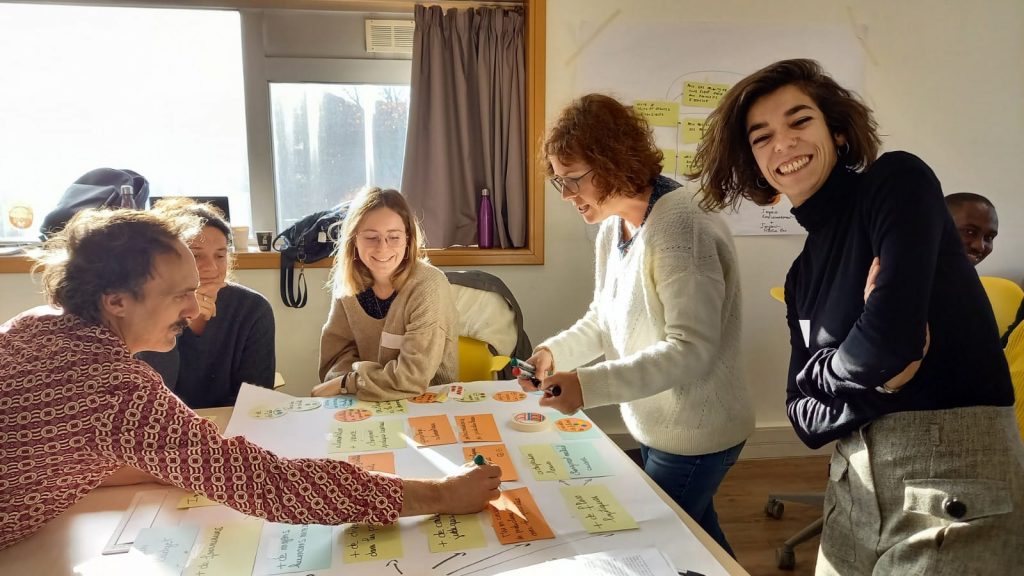
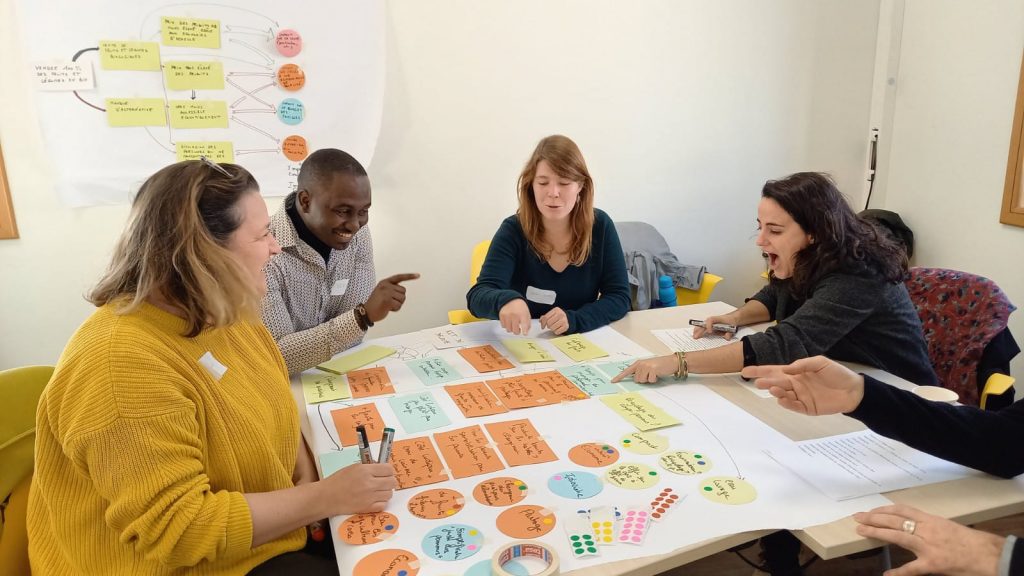
Groupes travaillant sur les premières étapes d’une carte du chemin d’impact.
Nous recommandons un facilitateur ou une facilitatrice par table/groupe de discussion et entre 3 et 6 participant.e.s par groupe. Les petits groupes sont plus efficaces car ils donnent à chacun.e la possibilité de s’exprimer, d’engager le dialogue et renforcent l’esprit d’équipe.
Dans l’idéal, les petits groupes occuperont deux positions : celle de créer et développer une carte de chemin d’impact pour un certain nombre d’activités, celle de réviser les cartes créées pour d’autres activités par d’autres sous-groupes. L’on opérera ainsi des permutations de groupe, selon une perspective proche de celle du Word Café.
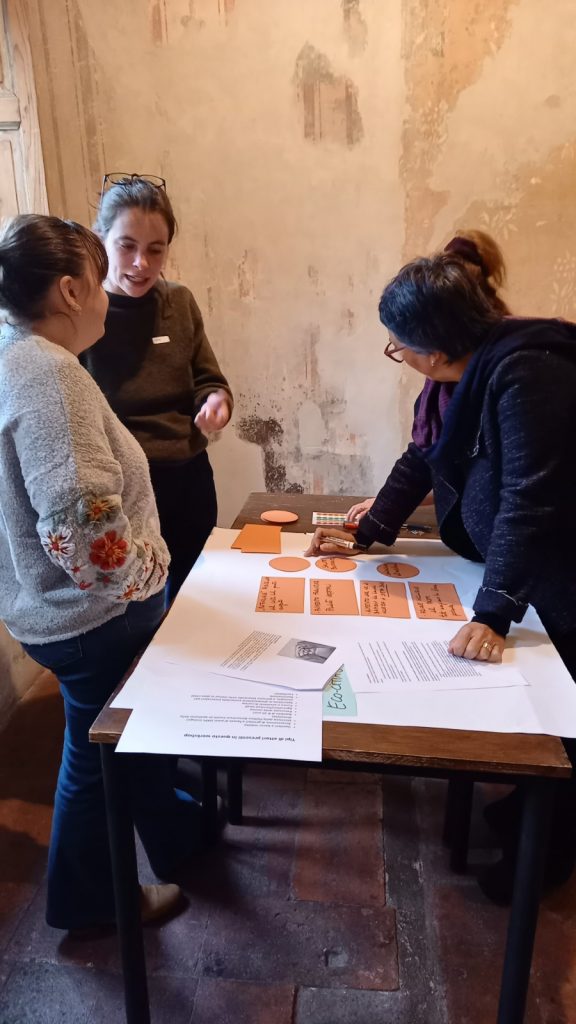
Les premières étapes d’une carte des chemins d’impact
Version finale d’une carte de chemin d’impact dessinée pendant l’atelier.
Les facilitateurs et facilitatrices peuvent aider les participant.e.s à présenter leurs idées au groupe, à distinguer les changements directs (outputs) des changements indirects (outcomes) et des impacts pour tracer un chemin.
Ils peuvent également veiller à signaler les impacts finaux et les dimensions de durabilité qu’ils concernent (à l’aide de gommettes de couleur, par exemple) et aider à comprendre comment ces chemins sont apparus.
Ils peuvent également aider à distinguer les changements potentiels des changements réels, ou les changements négatifs et positifs (en utilisant des marqueurs de couleurs ou de formes différentes, par exemple).
En gardant à l’esprit les dynamiques de pouvoir, organiser les groupes de manière à garantir une diversité substantielle parmi les participants a tendance à conduire à des discussions plus fructueuses. En outre, si cela est possible, il peut être utile de déterminer à l’avance quel groupe travaillera en premier sur quelle activité, afin d’identifier les acteurs qui seraient mieux à même de réfléchir à une activité donnée.
L’organisation et l’animation des groupes peut varier en fonction du thème abordé et du format. Pour plus de détails, vous pouvez vous reporter aux deux exemples ci-dessous.
Exemple d’agenda d’un atelier
- 16 h 30 : Introduction et discussions autour des objectifs et attendus de l’atelier.
- 17 h 00 : Début de l’atelier.
- Activité brise-glace.
- Présentation de l’innovation (activités présélectionnées).
Explication du fonctionnement des groupes de discussion et de l’exercice participatif.
- 17 h 30 : Travail de groupe- 1er tour (chaque groupe cartographie successivement trois activités).
- 18 h 10 : Travail de groupe – 2e tour (Permutation des groupes, chaque groupe vient alimenter le travail précédemment réalisé par un autre groupe sur une autre table).
- 18 h 50 : Pause.
- 19h00 : Travail de groupe – 3ème tour (Nouvelle permutation et enrichissement des cartes précédemment réalisées).
- 19h30 : Débriefing et feedback.
- 20h00 : Fin de l’atelier, collation.




